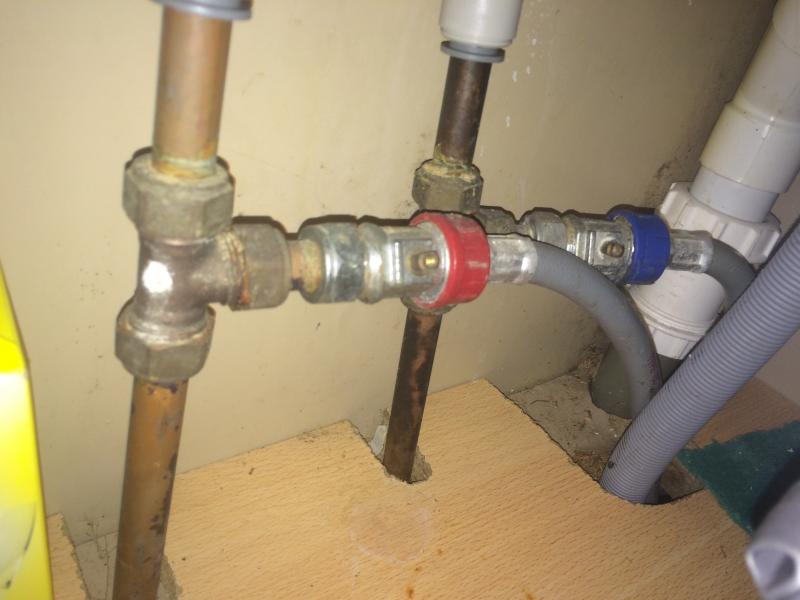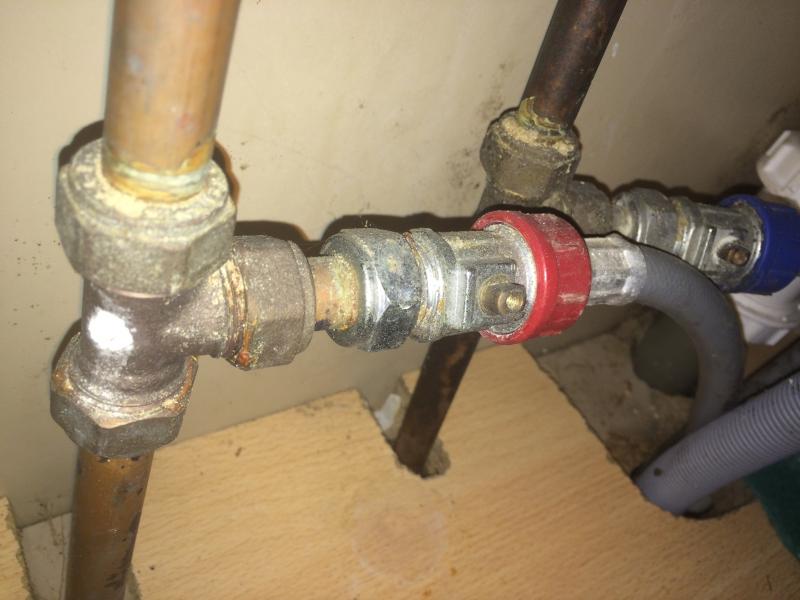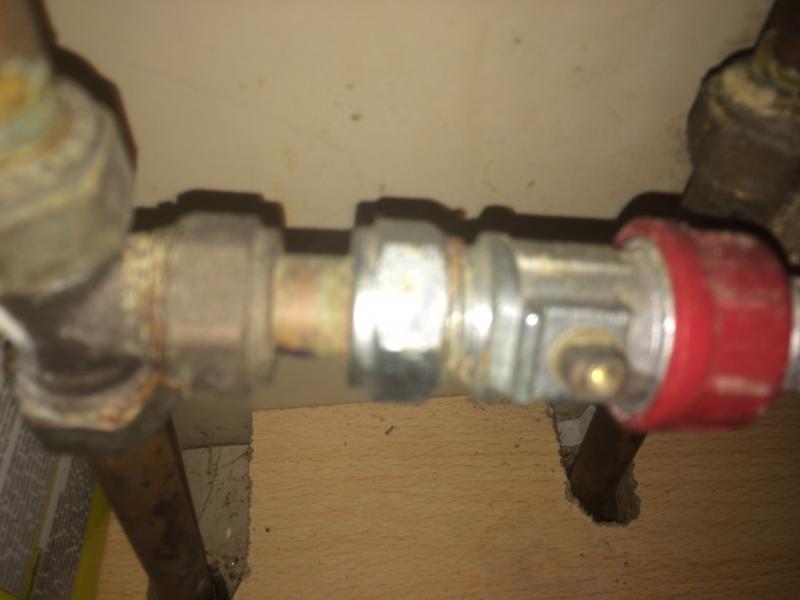- Joined
- 11 Jan 2015
- Messages
- 81
- Reaction score
- 0
- Country

I'm looking to replace our washing machine with a new one that is cold-fed only and have a question regarding the plumbing.
I've had a read through the forums for help and as my current machine is hot and cold feed, I have ordered a 3/4" blanking cap to cap off the hot feed pipe (I presume it screws on in place of the red screw fitting as seen in the image attached below).
However I have a question regarding the plumbing as it stands..... I would like to fit a shut off valve to the cold feed as I'm not sure if what I have currently are shut off valves? They appear to have a small 'knob' on each of the pipes but despite my best efforts neither of them turn therefore it isn't possible to shut the water off to the machine individually.
My questions are as follows (based on image below):
1. Are these shut off valves and are they replaceable with a more modern one on the cold feed with a handle I can turn?
2. Can I remove both the hot feed pipe and the 'extra bit' of silver coloured pipe and just screw the blanking cap to the screw fitting coming off the main feed pipe, rather than having a piece of additional pipe sticking out with the blanking cap on the end of it?
3. If I want to add a shut off valve to the cold feed is it just a case of buying one and screwing one end to the main pipe and then screw the cold feed to the washing machine to the other end, or do I need extra equipment / components?
Apologies for the lack of proper terms, I'm a novice when it comes to DIY!
I've had a read through the forums for help and as my current machine is hot and cold feed, I have ordered a 3/4" blanking cap to cap off the hot feed pipe (I presume it screws on in place of the red screw fitting as seen in the image attached below).
However I have a question regarding the plumbing as it stands..... I would like to fit a shut off valve to the cold feed as I'm not sure if what I have currently are shut off valves? They appear to have a small 'knob' on each of the pipes but despite my best efforts neither of them turn therefore it isn't possible to shut the water off to the machine individually.
My questions are as follows (based on image below):
1. Are these shut off valves and are they replaceable with a more modern one on the cold feed with a handle I can turn?
2. Can I remove both the hot feed pipe and the 'extra bit' of silver coloured pipe and just screw the blanking cap to the screw fitting coming off the main feed pipe, rather than having a piece of additional pipe sticking out with the blanking cap on the end of it?
3. If I want to add a shut off valve to the cold feed is it just a case of buying one and screwing one end to the main pipe and then screw the cold feed to the washing machine to the other end, or do I need extra equipment / components?
Apologies for the lack of proper terms, I'm a novice when it comes to DIY!



